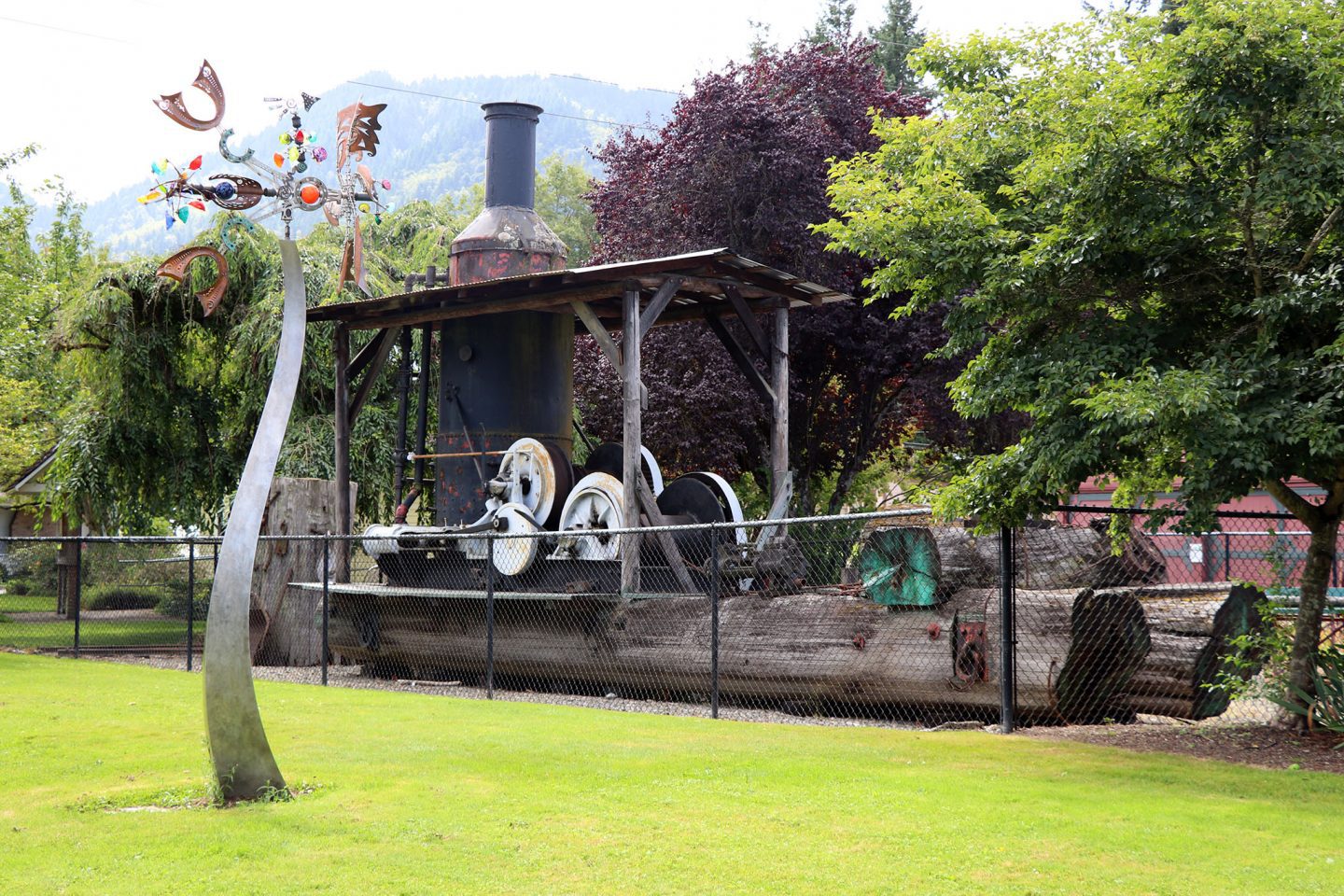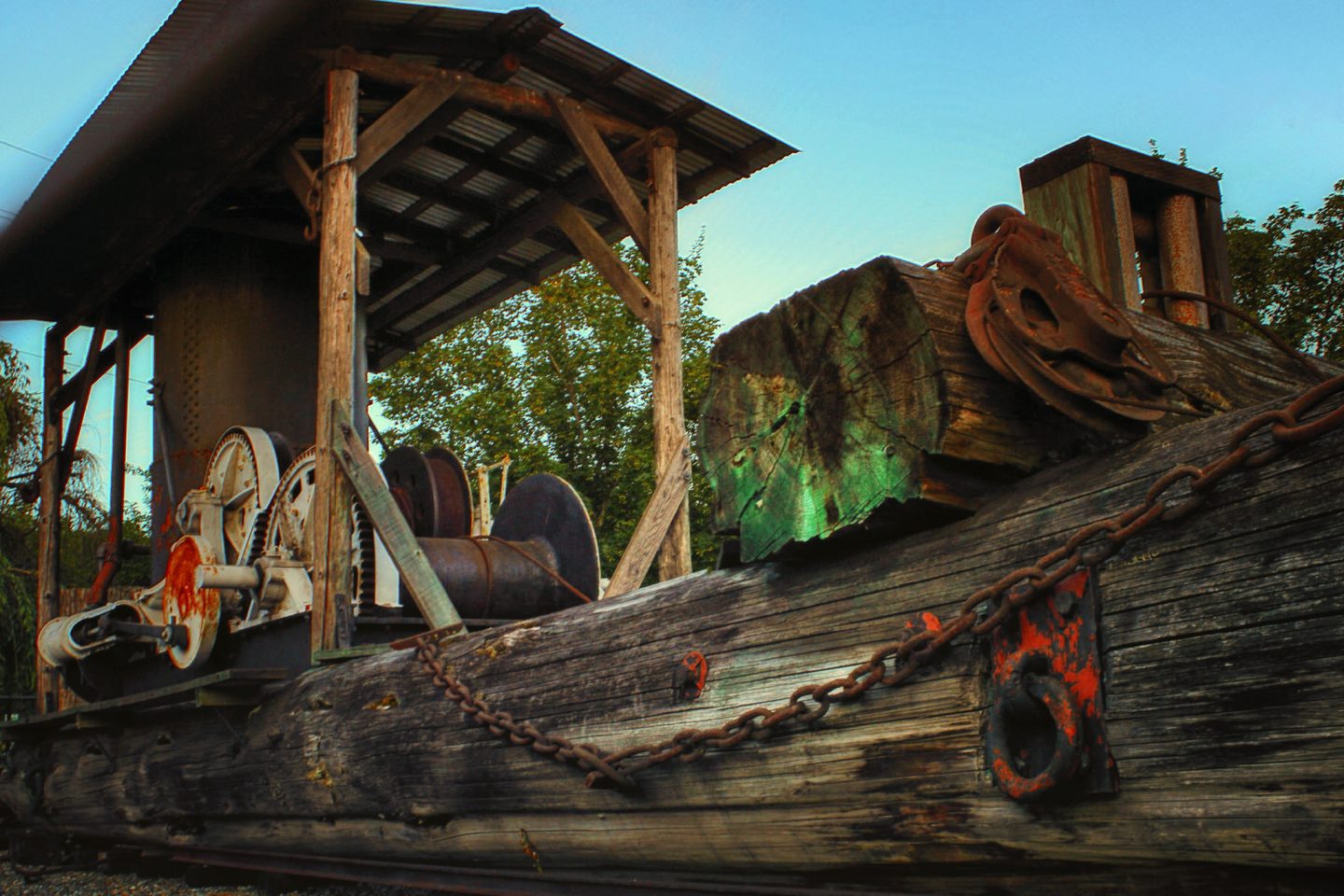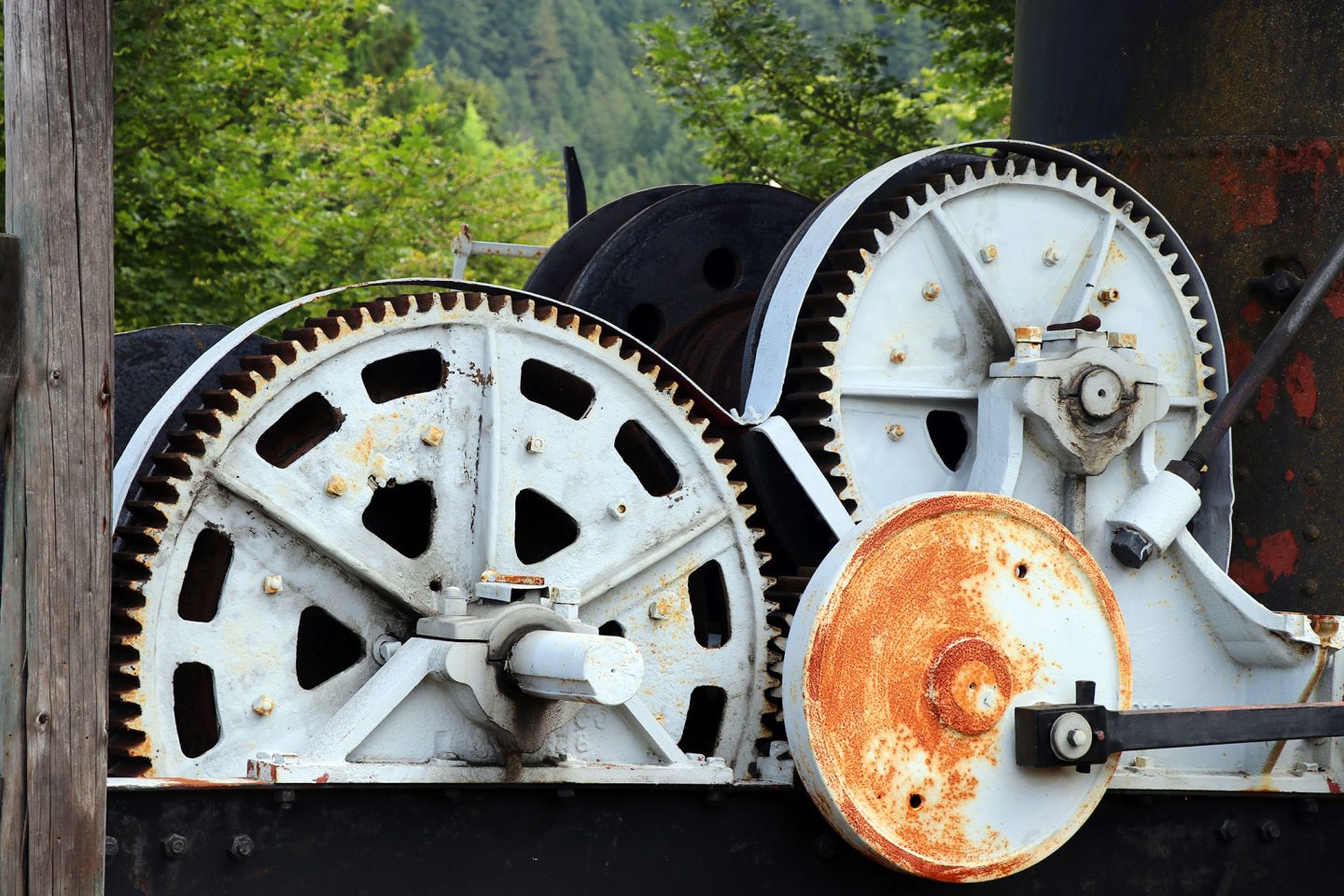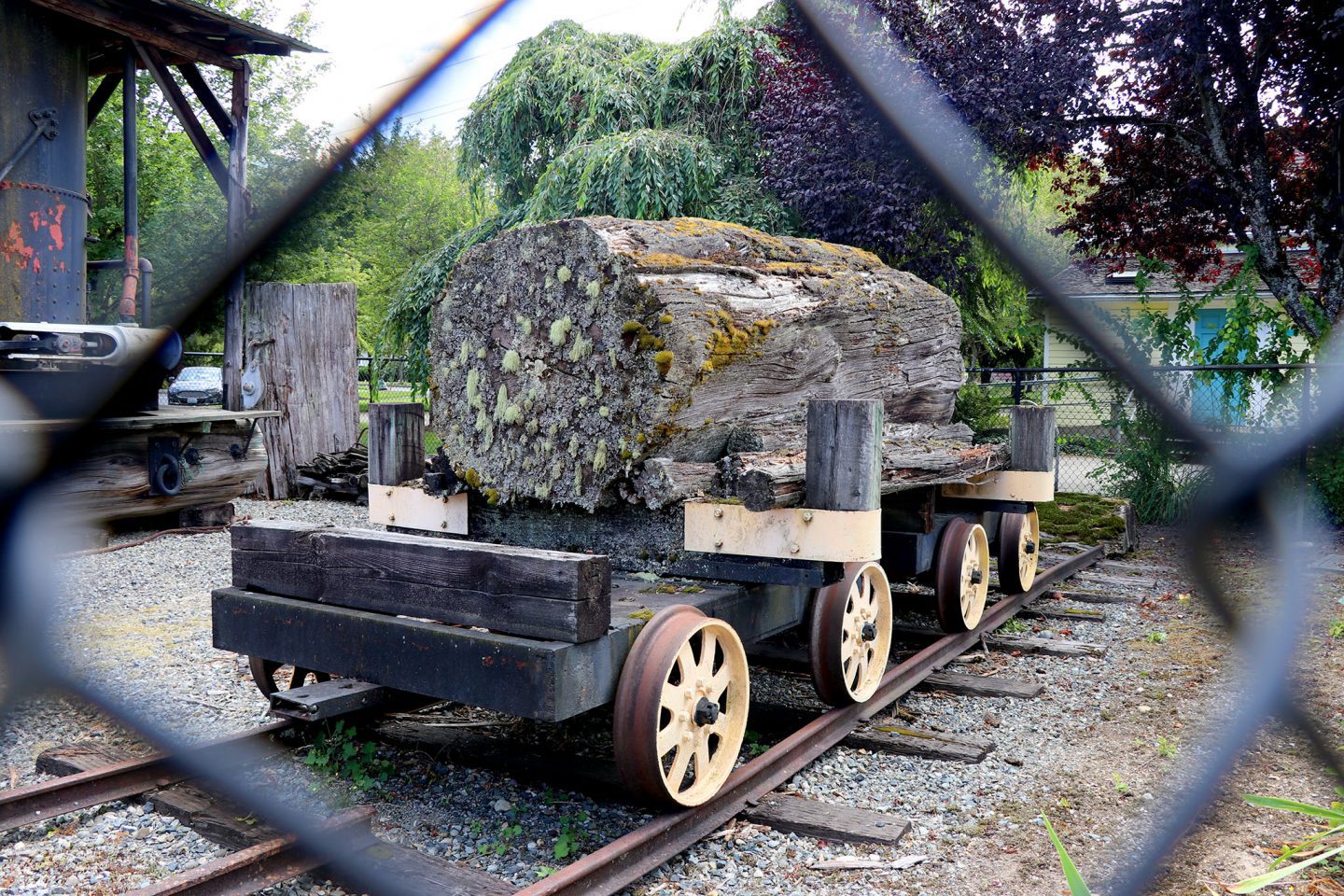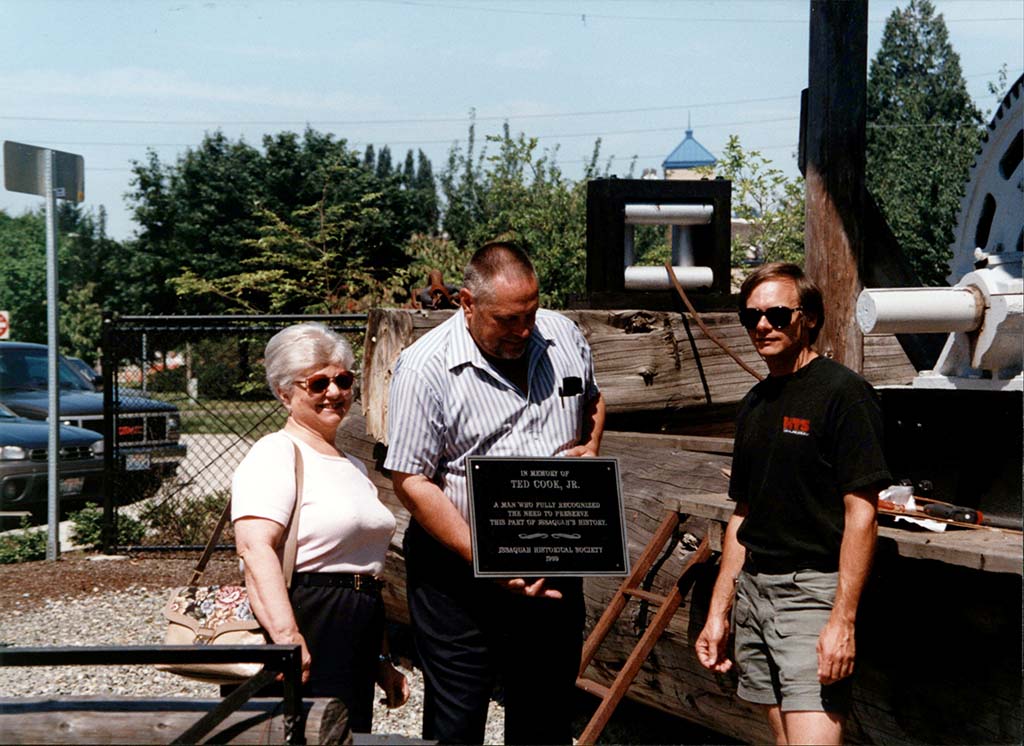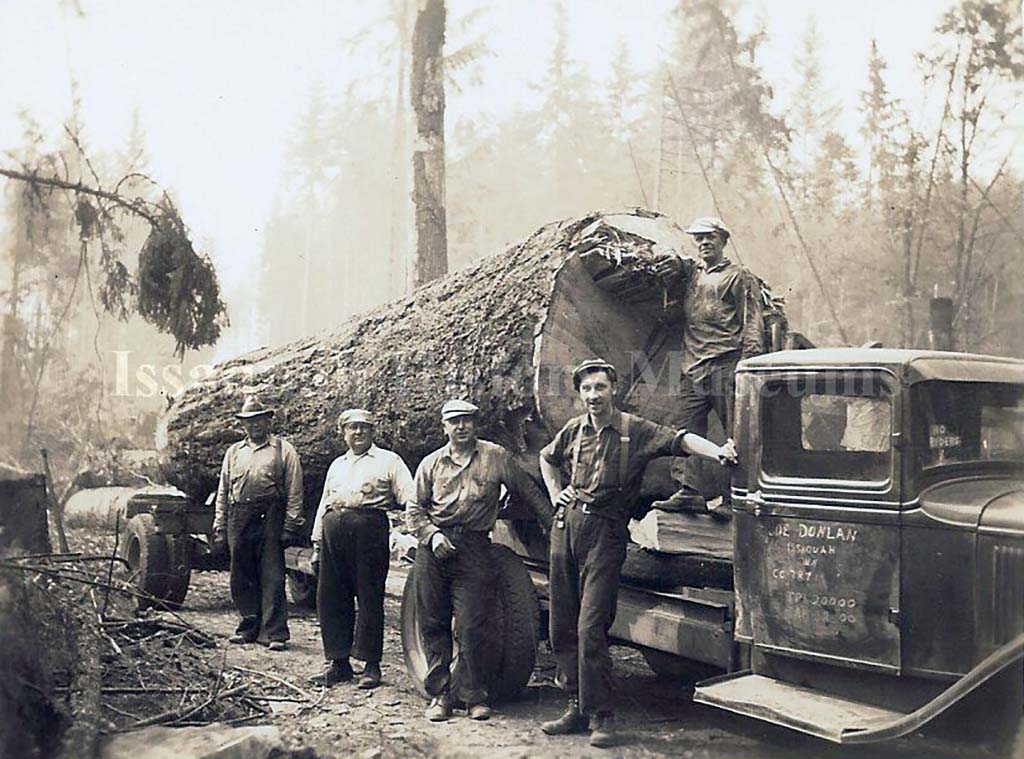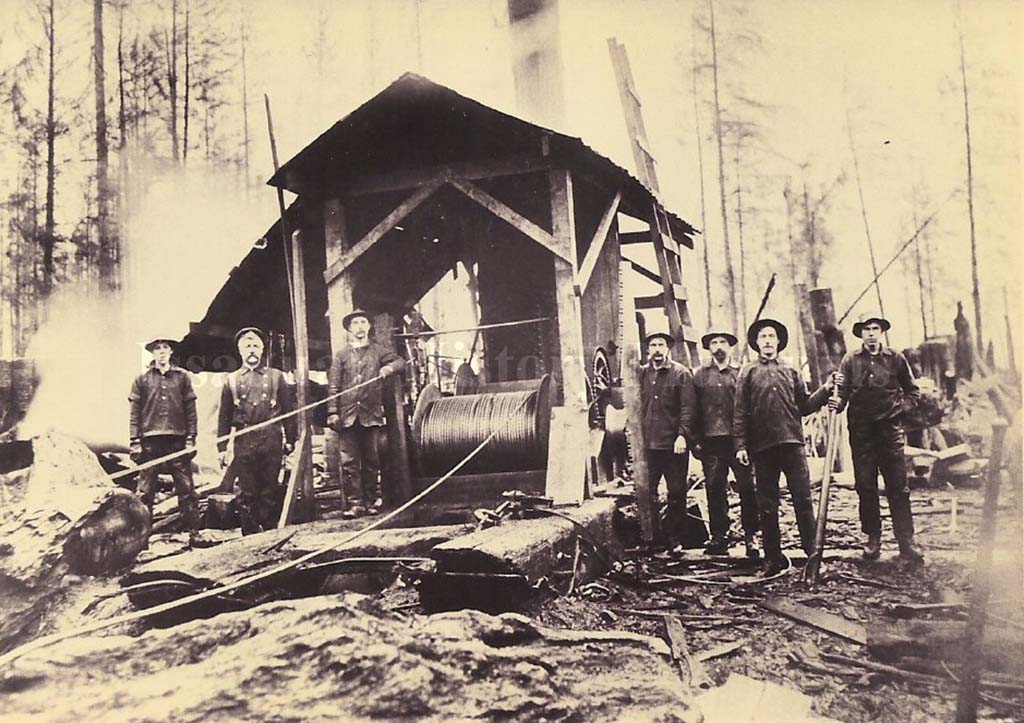-
Logging History Display
100 1st Avenue SE
Along with coal mining, logging was one of the catalysts for Issaquah’s growth during the late nineteenth and early twentieth centuries, and the logging history display in Issaquah’s “Preservation Park” (it is not an official city park) reflects this. Built in the 1990s, the display is maintained by the Issaquah Historical Society. A logging engine is the centerpiece of the display. This engine, more commonly known a hundred years ago as a donkey engine or a steam donkey, could move logs for up to a mile. A steam boiler on top of the engine provided power, and one end of a cable would be attached to a winch on the engine, while the other end would be tied to a log to move or “skid” it toward the engine, which was usually placed conveniently near a loading site. When it came time to move the engine to another site, one end of the cable would be tied to a tree at or near the next desired location and the donkey would pull itself along on log skids.
The engine on display was built between 1895 and 1910 by Puget Sound Iron and Steel Works near Tacoma. It was found in 1987 near Enumclaw on land owned by the Weyerhaeuser Company, and moving it to Issaquah proved to be no easy task. Volunteers spent four years traveling to the site, taking apart the larger pieces, and hauling them to Issaquah before finally taking what was left to the site on a flatbed truck. It was rebuilt during the 1990s on a small parcel of land next to the Issaquah Community Center, much to the chagrin of some city officials, who thought the engine (still covered with rust) didn’t belong there. But the engine stayed, and today serves as a prominent reminder of Issaquah’s logging past.
